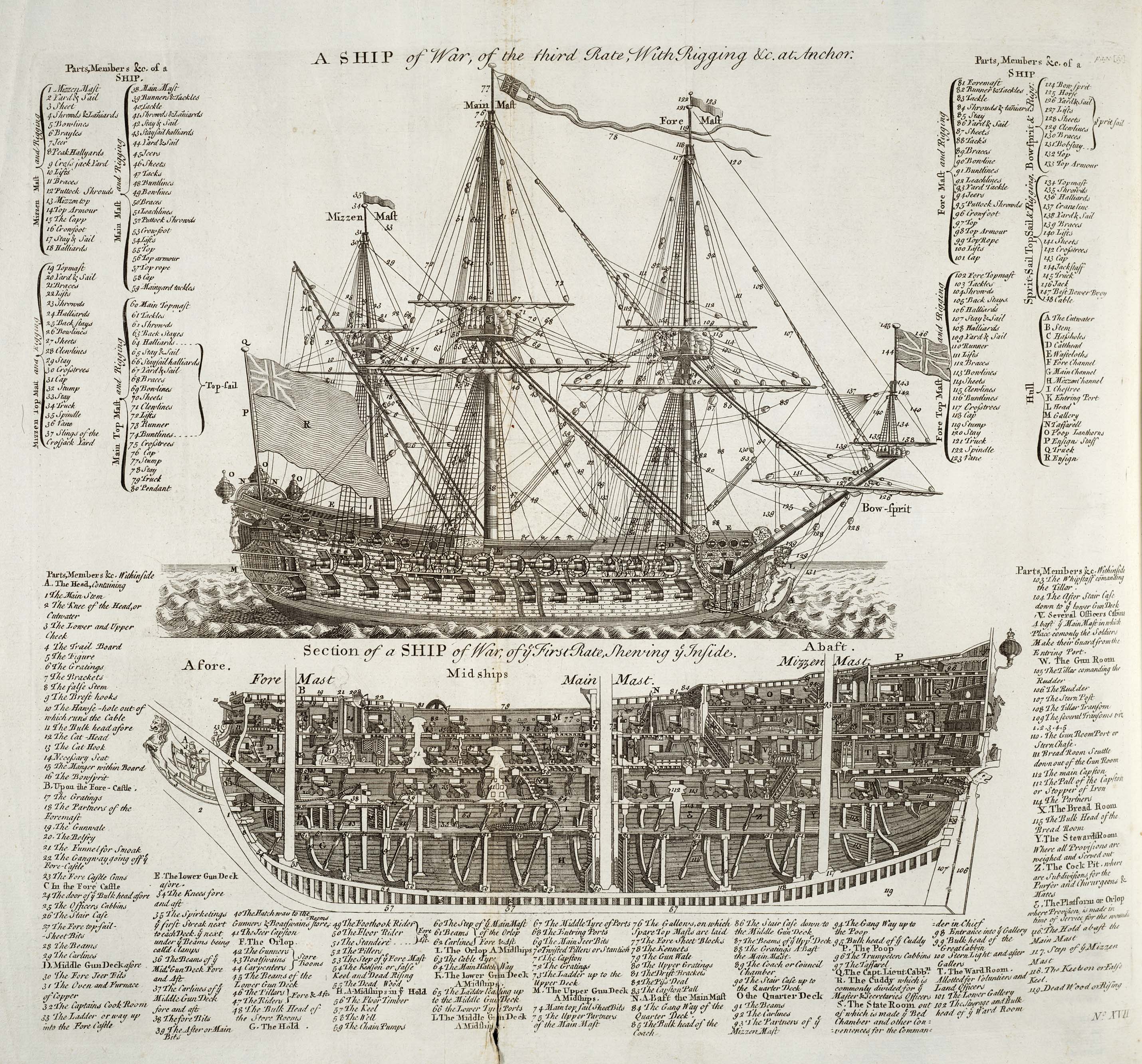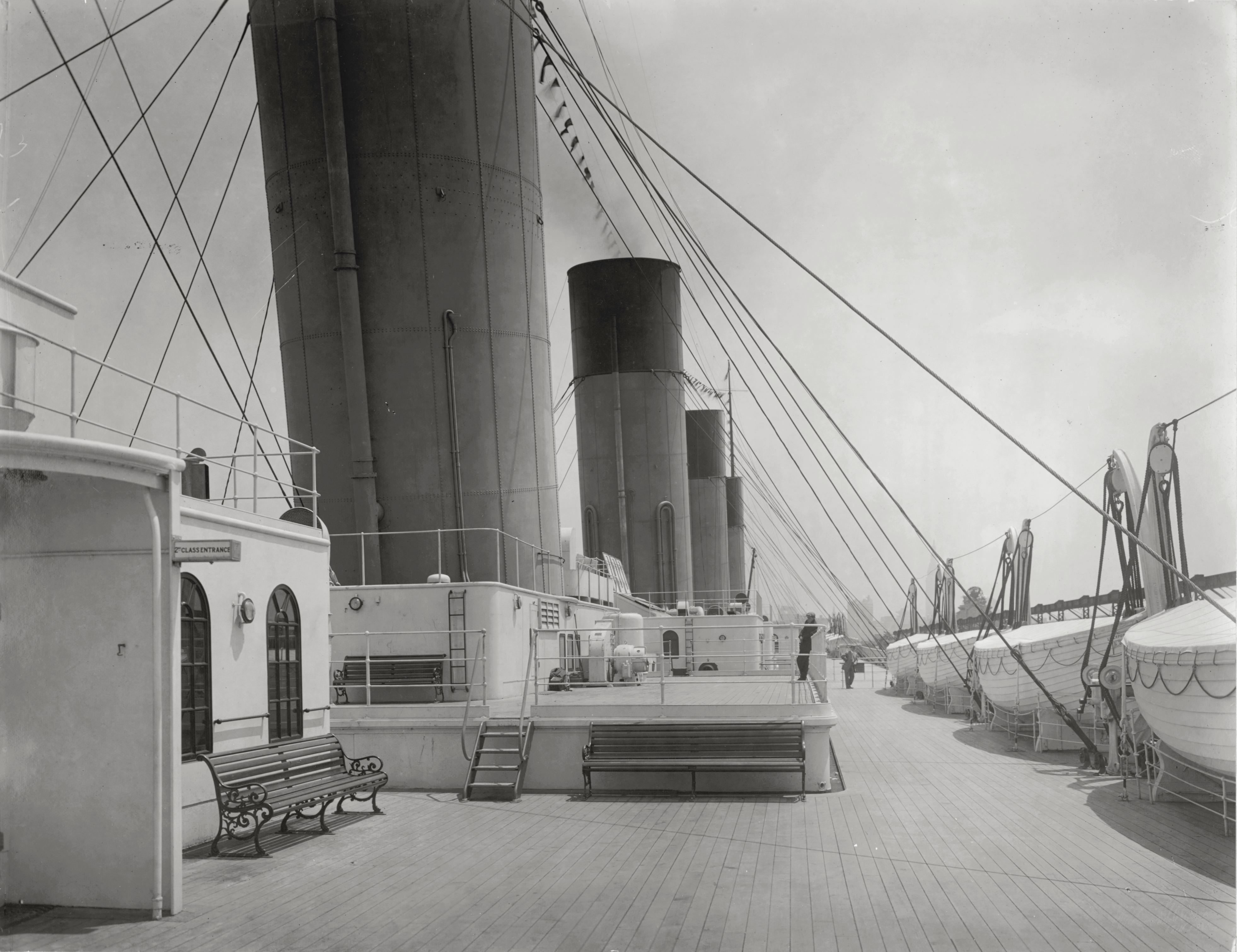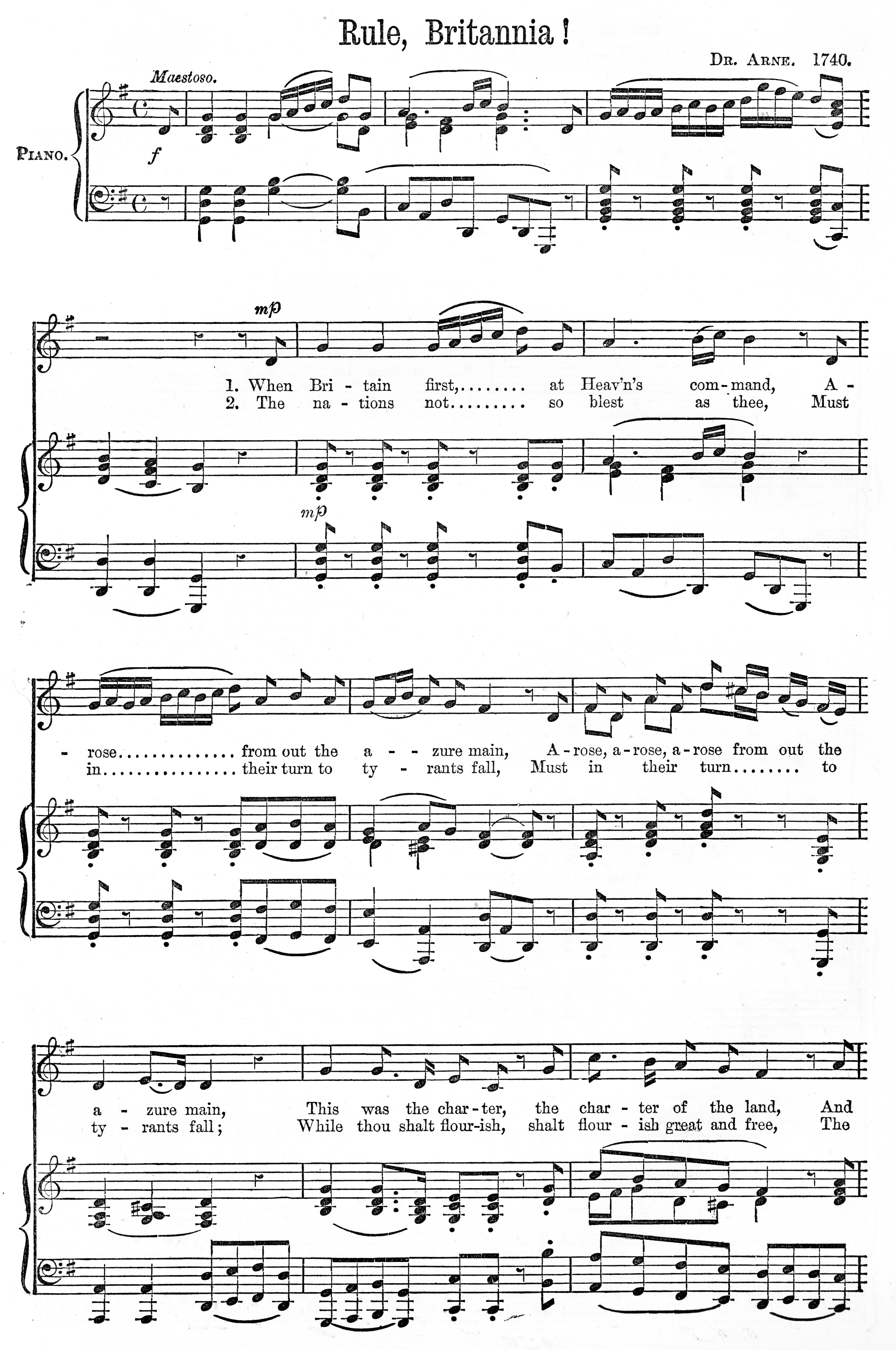|
Three-decker
A three-decker was a sailing warship which carried her principal carriage-mounted guns on three fully armed decks. Usually additional (smaller) guns were carried on the upper works (forecastle and quarterdeck), but this was not a continuous battery and so did not count as a "fourth deck". Three-deckers were usually "ships of the line", i.e. of sufficient strength to participate in the line of battle, and in the rating system of the Royal Navy were generally classed as first or second rates, although from the mid-1690s until the 1750s the larger of the third rate In the rating system of the Royal Navy, a third rate was a ship of the line which from the 1720s mounted between 64 and 80 guns, typically built with two gun decks (thus the related term two-decker). Rating When the rating system was f ...s were also three-deckers. Three-deckers also served in the naval forces of other European states, notably those of France, Russia and Spain. The French definition of a ... [...More Info...] [...Related Items...] OR: [Wikipedia] [Google] [Baidu] |
Ship Of The Line
A ship of the line was a type of naval warship constructed during the Age of Sail from the 17th century to the mid-19th century. The ship of the line was designed for the naval tactics in the Age of Sail, naval tactic known as the line of battle, which involved the two columns of opposing warships manoeuvering to volley fire with the naval cannon, cannons along their Broadside (naval), broadsides. In conflicts where opposing ships were both able to fire from their broadsides, the faction with more cannons firingand therefore more firepowertypically had an advantage. From the end of the 1840s, the introduction of steam engine, steam power brought less dependence on the wind in battle and led to the construction of propeller, screw-driven wooden-hulled ships of the line; a number of purely sail-powered ships were converted to this propulsion mechanism. However, the rise of the ironclad warship, ironclad frigate, starting in 1859, made steam-assisted ships of the line obsolete. The ... [...More Info...] [...Related Items...] OR: [Wikipedia] [Google] [Baidu] |
Rating System Of The Royal Navy
The rating system of the Royal Navy and its predecessors was used by the Royal Navy between the beginning of the 17th century and the middle of the 19th century to categorise sailing warships, initially classing them according to their assigned complement of men, and later according to the number of their carriage-mounted guns. The rating system of the Royal Navy formally came to an end in the late 19th century by declaration of the Admiralty; rating ships by the number of guns had become obsolete with new types of gun, the introduction of steam propulsion and the use of iron and steel armour. Origins and description The first movement towards a English naval rating system began in the early 16th century, when the largest carracks in the Tudor navy, such as ''Mary Rose'', ''Peter Pomegranate'' and '' Henry Grace à Dieu'', were denoted as "great ships". This was due only to their size, not to their weight, crew or number of guns. When these carracks were superseded by ga ... [...More Info...] [...Related Items...] OR: [Wikipedia] [Google] [Baidu] |
Second Rate
In the rating system of the Royal Navy used to categorise sailing warships, a second-rate was a ship of the line which by the start of the 18th century mounted 90 to 98 guns on three gun decks; earlier 17th-century second rates had fewer guns and were originally two-deckers or had only partially armed third gun decks. A "second rate" was the second largest class of warships in a hierarchical system of six "ratings" based on size and firepower. They were essentially smaller and hence cheaper versions of the 100-gun first-rates. Like the first rates, they fought in the line of battle, but unlike the first rates, which were considered too valuable to risk in distant stations, the second rates often served also in major overseas stations as flagships. They had a reputation for poor handling and slow sailing. They were popular as flagships of admirals commanding the Windward and/or Leeward Islands station, which was usually a Rear-admiral of the red. Rating Typically measuring ... [...More Info...] [...Related Items...] OR: [Wikipedia] [Google] [Baidu] |
Third Rate
In the rating system of the Royal Navy, a third rate was a ship of the line which from the 1720s mounted between 64 and 80 guns, typically built with two gun decks (thus the related term two-decker). Rating When the rating system was first established in the 1620s, the third rate was defined as those ships having at least 200 but not more than 300 men; previous to this, the type had been classified as "middling ships". By the 1660s, the means of classification had shifted from the number of men to the number of carriage-mounted guns, and third rates at that time mounted between 48 and 60 guns. By the turn of the century, the criterion boundaries had increased and third rate carried more than 60 guns, with second rates having between 90 and 98 guns, while first rates had 100 guns or more, and fourth rates between 48 and 60 guns. By the latter half of the 18th century, they carried between 500 and 720 men. This designation became especially common because it included the ... [...More Info...] [...Related Items...] OR: [Wikipedia] [Google] [Baidu] |
HMS Britannia Chambers Mg 0529
HMS or hms may refer to: Education * Habib Medical School, of the Islamic University in Uganda * Hartley–Melvin–Sanborn Community School District of Iowa, United States * Harvard Medical School of Harvard University * Heidelberg Middle School, a former American school in Heidelberg, Germany * Hongwanji Mission School, in Hawaii, United States * Horley Methodist School, Teluk Intan, in Malaysia Medicine and science * Hartford Medical Society, an American professional association based in Hartford, Connecticut * Health management system * Hexose monophosphate shunt, an alternative name for the pentose phosphate pathway * Highly migratory species, a classification of fish * Hypermobility spectrum disorder, formerly hypermobility syndrome or HMS * HMS, a brand name of medrysone Technology * Huawei Mobile Services, proprietary apps and services from Huawei bundled with Android devices * HMS Networks, a company in the field of industrial communications * Heavy meltin ... [...More Info...] [...Related Items...] OR: [Wikipedia] [Google] [Baidu] |
Deck (ship)
A deck is a permanent covering over a Compartment (ship), compartment or a hull (watercraft), hull of a ship. On a boat or ship, the primary or upper deck is the horizontal structure that forms the "roof" of the hull, strengthening it and serving as the primary working surface. Vessels often have more than one level both within the hull and in the superstructure above the primary deck, similar to the floors of a multi-storey building, that are also referred to as decks, as are certain compartments and decks built over specific areas of the superstructure. Decks for some purposes have specific names. Structure The main purpose of the upper or primary deck is structural, and only secondarily to provide weather-tightness and support people and equipment. The deck serves as the lid to the complex box girder which can be identified as the hull. It resists Tension (physics), tension, Compression (physics), compression, and racking forces. The deck's scantling is usually the same as t ... [...More Info...] [...Related Items...] OR: [Wikipedia] [Google] [Baidu] |
First Rate
In the rating system of the Royal Navy used to categorise sailing warships, a first rate was the designation for the largest ships of the line. Originating in the Jacobean era with the designation of Ships Royal capable of carrying at least 400 men, the size and establishment of first-rates evolved over the following 250 years to eventually denote ships of the line carrying at least 80 guns across three gundecks. By the end of the eighteenth century, a first-rate carried no fewer than 100 guns and more than 850 crew, and had a measurement ( burthen) tonnage of some 2,000 tons. Origins The concept of a rating system for British naval vessels dates to the accession of James I of England, following which the fleet was formally divided into "great", "middling" and "lesser" craft. A 1618 commission of enquiry added a further designation of "Ships Royal" for the largest and most prestigious vessels in the fleet, each capable of carrying at least 400 men. The first Ships Royal – ... [...More Info...] [...Related Items...] OR: [Wikipedia] [Google] [Baidu] |
HMS Britannia (1820)
HMS ''Britannia'' was a 120-gun first-rate built for the Royal Navy. Completed in 1829 she was not commissioned until 1823 when she became a flagship at Plymouth. The ship remained there until 1829 when she became flagship of the Mediterranean Fleet. ''Britannia'' was often a flagship wherever she was assigned. She became a private ship in 1852 in the Mediterranean Fleet and participated in the Bombardment of Sevastopol in 1854. ''Britannia'' returned home the following year and was converted into a hospital ship. She became a cadet training ship in 1859 and was broken up ten years later. Description The ''Caledonia'' class was an improved version of with additional freeboard to allow them to fight all their guns in heavy weather. ''Britannia'' measured on the gundeck and on the keel. She had a beam of , a depth of hold of , a deep draught of and had a tonnage of 2616 tons burthen. The ship was armed with 120 muzzle-loading, smoothbore guns that consisted of thirty ... [...More Info...] [...Related Items...] OR: [Wikipedia] [Google] [Baidu] |
Oriental Crisis Of 1840
The Oriental Crisis of 1840 was an episode in the Egyptian–Ottoman War in the eastern Mediterranean, triggered by the self-declared Khedive of Egypt and Sudan Muhammad Ali Pasha's aims to establish a personal empire in Ottoman Egypt. Background In the preceding decades, Muhammad Ali had expanded and strengthened his hold on Ottoman territory, beginning with Egypt, where he acted as a viceroy for the Sultan. Called upon to assist the Ottomans in the Greek War of Independence, Muhammad Ali in return demanded parts of Ottoman Syria to be transferred to his personal rule. When the war ended and the Porte failed to keep its promise, Muhammad Ali launched a military campaign against his Ottoman masters and easily took most of the Syrian lands. Syrian War In 1839, the Ottoman Empire attempted to retake Syria from Muhammad Ali but was defeated by his son, Ibrahim Pasha in the Battle of Nezib. Thus, a new war between Muhammad Ali and the Ottomans escalated, with the latter fai ... [...More Info...] [...Related Items...] OR: [Wikipedia] [Google] [Baidu] |
72nd Regiment, Duke Of Albany's Own Highlanders
The 72nd Highlanders was a British Army Highland Infantry Regiment of the Line. Raised in 1778, it was originally numbered 78th, before being redesignated the 72nd in 1786. Under the Childers Reforms it amalgamated with the 78th (Highlanders) Regiment to form the 1st Battalion of the Seaforth Highlanders in 1881. History Early history The regiment was raised in the Western Highlands by Kenneth Mackenzie, Earl of Seaforth as the Seaforth (Highland) Regiment in January 1778 as an act of gratitude for the restoration of the family Earldom which had been forfeited during the Jacobite rising of 1715. A corps of 1,130 men was raised of whom 900 were Highlanders and the remainder came from the Lowlands: it was established at Elgin, its first base, in May 1778. In August 1778 the regiment marched to Leith to embark for India – but a dispute regarding their terms of service led about half the men to march back to Edinburgh where they took up a position of protest on Arthur's S ... [...More Info...] [...Related Items...] OR: [Wikipedia] [Google] [Baidu] |
Rule, Britannia!
"Rule, Britannia!" is a British patriotic song, originating from the 1740 poem "Rule, Britannia" by James Thomson and set to music by Thomas Arne in the same year. It is most strongly associated with the Royal Navy, but is also used by the British Army. ''Alfred'' The song was originally the final musical number in Thomas Arne's '' Alfred'', a masque about Alfred the Great, co-written by James Thomson and David Mallet and first performed at Cliveden, the country home of Frederick, Prince of Wales, on 1 August 1740. The work was initially devised to commemorate the accession of Frederick's grandfather George I and the birthday of the Princess Augusta. Lyrics This version is taken from ''The Works of James Thomson'' by James Thomson, Published 1763, Vol II, p. 191, which includes the entire text of ''Alfred''. "Married to a Mermaid" In 1751 Mallet re-used the text of "Rule, Britannia!", omitting three of the original six stanzas and adding three new ones ... [...More Info...] [...Related Items...] OR: [Wikipedia] [Google] [Baidu] |








